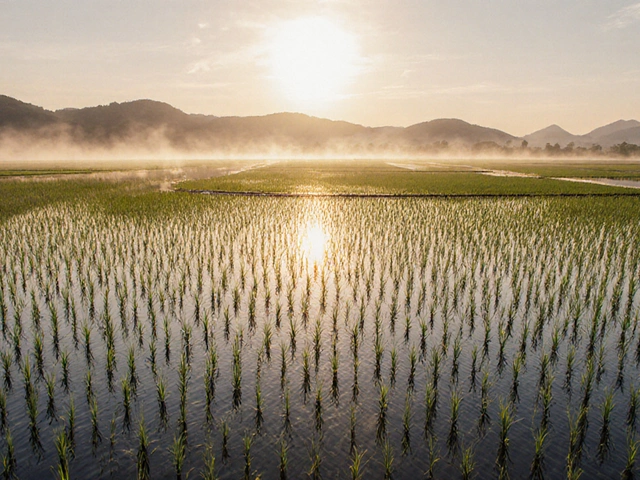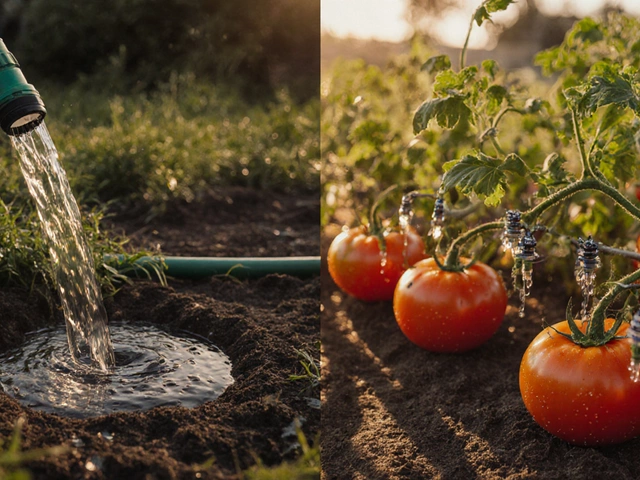Annual Crops in India: What You Need to Know
If you’re planting something that finishes its life cycle in one year, you’re dealing with an annual crop. From rice and wheat to broccoli and beans, these crops are the backbone of Indian agriculture. Knowing the right varieties, planting windows, and care tricks can turn a modest field into a solid income.
Choose the Right Crop for Your Region
India’s climate varies wildly, so match the crop to your local weather. In the north, wheat and mustard thrive in cooler months, while rice dominates the monsoon‑fed plains. In the south, millets and groundnuts handle the dry heat well. If you want a high‑value vegetable, broccoli farms in the cooler hill zones of Himachal or Uttarakhand are seeing good returns in 2025.
Before you buy seeds, check the state’s agricultural department for approved varieties. Certified seeds give better germination and disease resistance, which saves money in the long run.
Soil, Water & Nutrition Basics
Most annuals need well‑drained soil with a pH between 6.0 and 7.5. For rice, a clayey, water‑holding soil works best, while cereals like wheat prefer loamy textures. If your soil is heavy, mix in compost or sand to improve texture – a simple trick that helps roots breathe.
Water management is crucial. Drip irrigation can cut water use by up to 30%, but the system can be pricey. If budget is tight, consider shallow furrow irrigation for rice or rain‑fed methods for millets. Always water early in the morning to reduce evaporation.
Nutrition-wise, a balanced NPK (nitrogen‑phosphorus‑potassium) mix supports growth. For leafy vegetables, add extra nitrogen. For flowering crops like broccoli, boost phosphorus to aid head development. A soil test every season tells you exactly what’s missing.
Common Challenges and How to Overcome Them
Pests and diseases bite hard, especially in humid regions. Instead of reaching for chemicals, try companion planting. Plant marigolds alongside tomatoes to deter nematodes, or use garlic extracts for a natural spray against fungal spots.
Weather surprises can wreck a crop. If a cold snap hits a wheat field, apply a light frost‑protectant spray or cover the seedlings with burlap. For unexpected heavy rains, ensure good field drainage to avoid root rot.
Profit Tips for Annual Crop Farmers
Keep an eye on market trends. Broccoli prices spiked in early 2025 due to a short supply, pushing profits up by 20%. If you can time your harvest to hit that window, the payoff is worth the extra effort.
Diversify. Plant a mix of staple cereals and a few high‑value vegetables. This spreads risk – if one crop faces a pest issue, the others keep cash flowing.
Finally, record everything. Track seed costs, fertilizer amounts, water usage, and yields. Data helps you spot what works and where you can cut waste for the next season.
Annual crops are a reliable way to feed families and earn a living. With the right variety, soil prep, water strategy, and market awareness, you can boost both yield and profit. Start small, watch the results, and expand as confidence grows. Happy farming!
Does Rice Grow Back Every Year? Understanding Rice's Regrowth Cycle
Ever wondered if you can plant rice once and just keep harvesting year after year? This article explains whether rice naturally regrows annually or if farmers need to replant. It shares how ratoon cropping works, when rice regrows after harvest, and the differences between perennial and annual rice varieties. You'll also find out what conditions let rice fields bounce back and where farmers actually benefit from rice regrowth.
About
Rice Cultivation
Latest Posts


Root Rot Signs: Spotting Trouble in Your Indoor Plants
By Alden Thorne Feb 9, 2025

Why Drip Irrigation Is Better Than Soaker Hoses for Your Garden
By Alden Thorne Nov 25, 2025

Top Easy Houseplants for Beginners - Low‑Maintenance Indoor Greens
By Alden Thorne Oct 7, 2025

